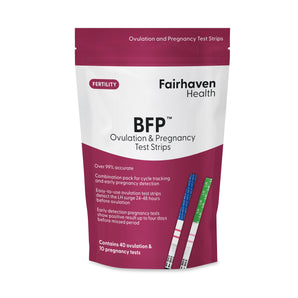By Samantha Sorden
Pediatricians recommend exclusive breastfeeding for at least the first six months of life. Research indicates that breastfeeding is beneficial for both you and your baby – you experience lower risk of ovarian cancer, postpartum depression, breast cancer and diabetes, while your baby receives all the good nutrients and also has a lower risk of diseases like diabetes, obesity, asthma and lower respiratory infections. However, many mothers run into some breastfeeding obstacles, including foremilk-hindmilk imbalance.
This name may be a bit misleading because women really only produce one type of milk, although the fat content of the milk does change over the course of a feeding. The amount of fat in breast milk depends on how long the milk has been collecting in the ducts and how full or empty the breast is at the moment.
Foremilk is the watery milk that your nursing baby gets first, which consists of low fat content and high lactose content. The foremilk helps quench your baby’s thirst, and stimulate energy and brain development. Hindmilk, on the other hand, is the creamy milk with higher fat content that is stored in the milk-making cells located higher up in the breast, and helps stimulate your baby’s growth.
At the beginning of each feeding, your baby triggers your milk ejection reflex (also known as let-down reflex). The hormone oxytocin is released into the bloodstream and the watery milk moves down the ducts toward the nipple where it mixes with any milk left over from the last feeding. The higher fat hindmilk mixes with the high lactose foremilk, generating the perfect food for your baby.
But if your milk production is too high, your baby may fill up on foremilk before the fatty hindmilk reaches the nipple, a condition known as foremilk-hindmilk imbalance or oversupply. When this occurs, your baby may experience an imbalance of lactose and lactase, the enzyme responsible for breaking down lactose. Your baby will get too much lactose at one time and will not have enough lactase to digest the lactose. A few key symptoms to look for include gassiness/discomfort and green, watery or foamy stools.
Over time, large amounts of undigested lactose can irritate the lining of the intestines, which can result in small amounts of blood in your baby’s stools. Oftentimes foremilk-hindmilk imbalance is misdiagnosed as food allergies or lactose intolerance, however lactose intolerance in babies is extremely rare because they produce so much lactase (the enzyme that breaks down lactose). Approximately 1 in 30,000 babies are diagnosed with lactose intolerance, also known as galactosemia. If the disease goes untreated, your baby would not gain weight well and would show signs of dehydration, which could be fatal.
Eventually, you will need to generate more milk due to baby’s high volume intake of the low-fat milk. Your breasts will be very full most of the time, and you may even have plugged ducts, which can lead to mastitis (breast infection).
Although foremilk-hindmilk imbalance can cause some aggravating symptoms for both you and your baby, the issue usually resolves itself once you establish a breastfeeding routine. If you continue to experience problems, changing feeding patterns can easily diminish the imbalance.
During each feeding, you should encourage your baby to nurse on one side long enough to ensure your baby gets the hindmilk before switching breasts. You can also pump some of your breast milk prior to feeding your little one. This way, the baby will receive all the calories needed to keep him/her healthy while taking in less milk. If this technique works, you should notice that your baby is less fussy, and that stools become less watery and more yellow. Your baby should also chock less because the milk is flowing slower from the nipple.
Frequent feedings can also help relieve foremilk-hindmilk imbalance. Longer time between feedings can result in diluted breast milk. The milk leftover from the previous feeding mixes with the watery foremilk, so your baby fills up before the fatty hindmilk comes in. Shorter time between feedings will ensure that your baby receives the milk with higher fat content, and will help control your milk production.









